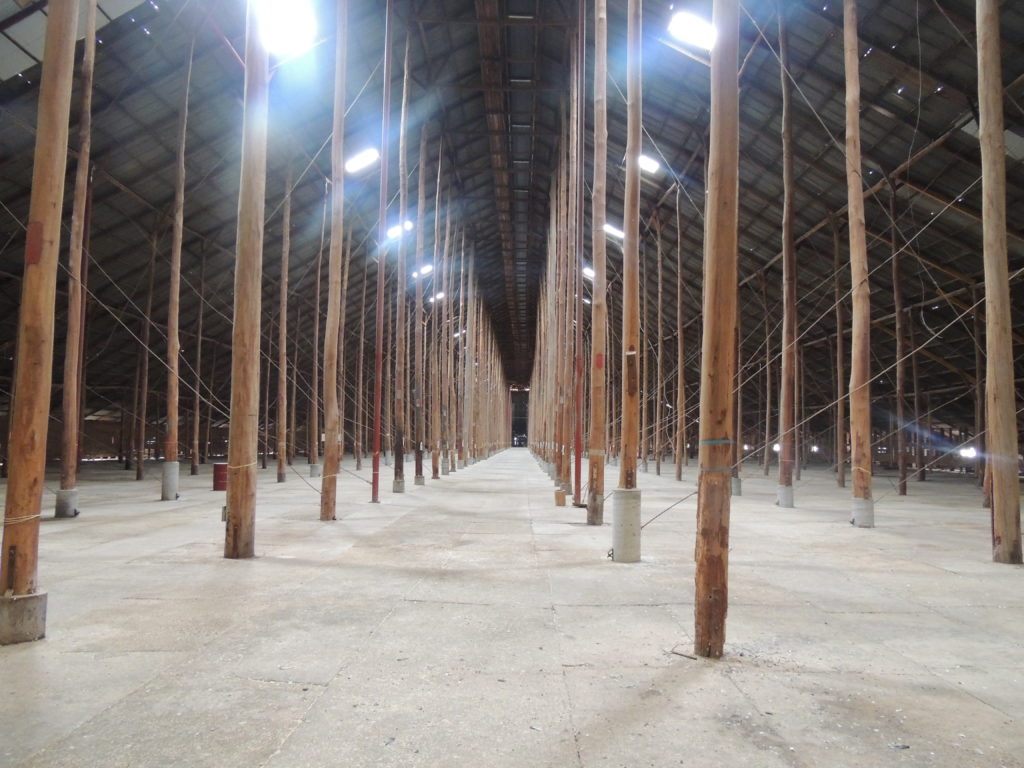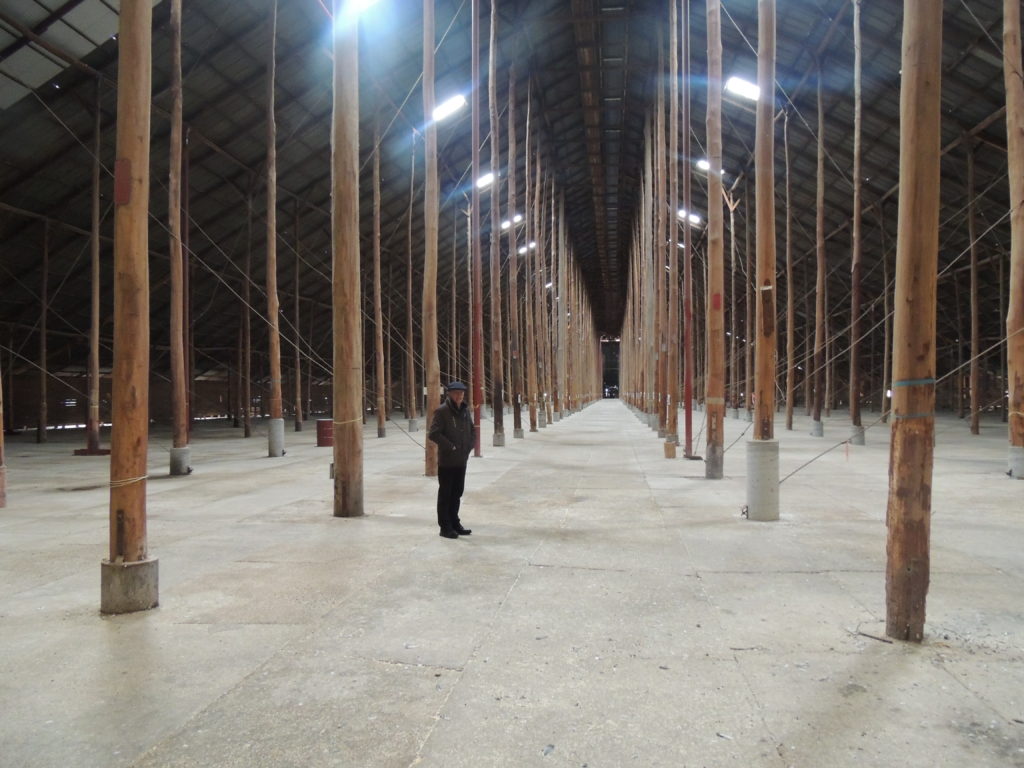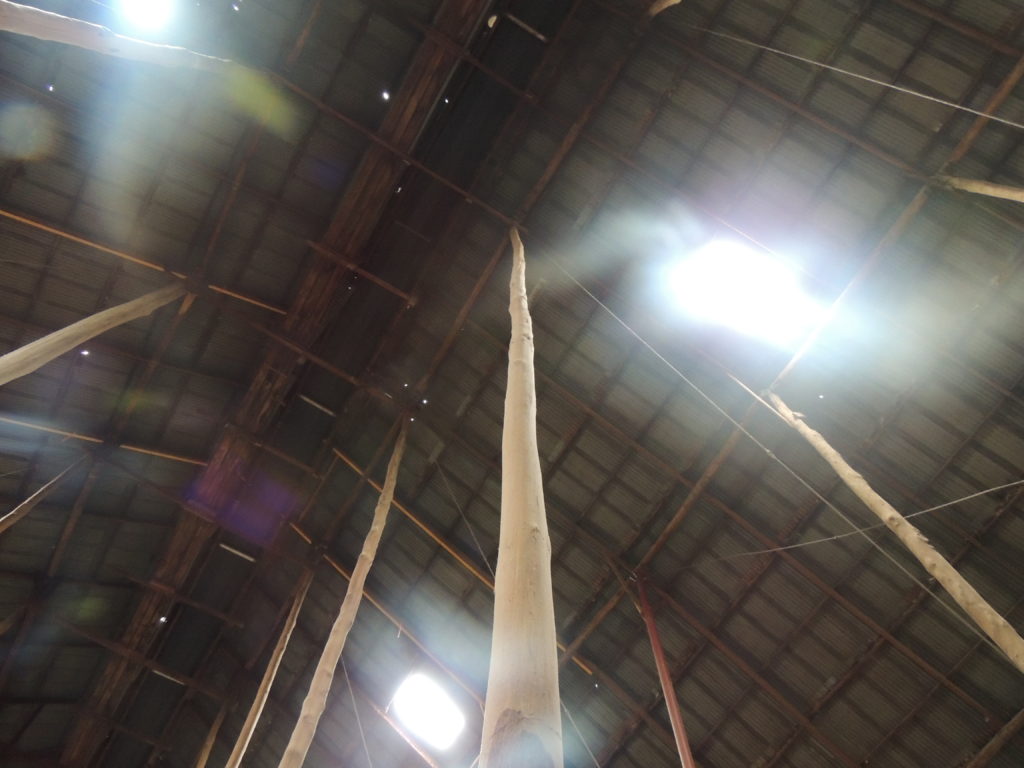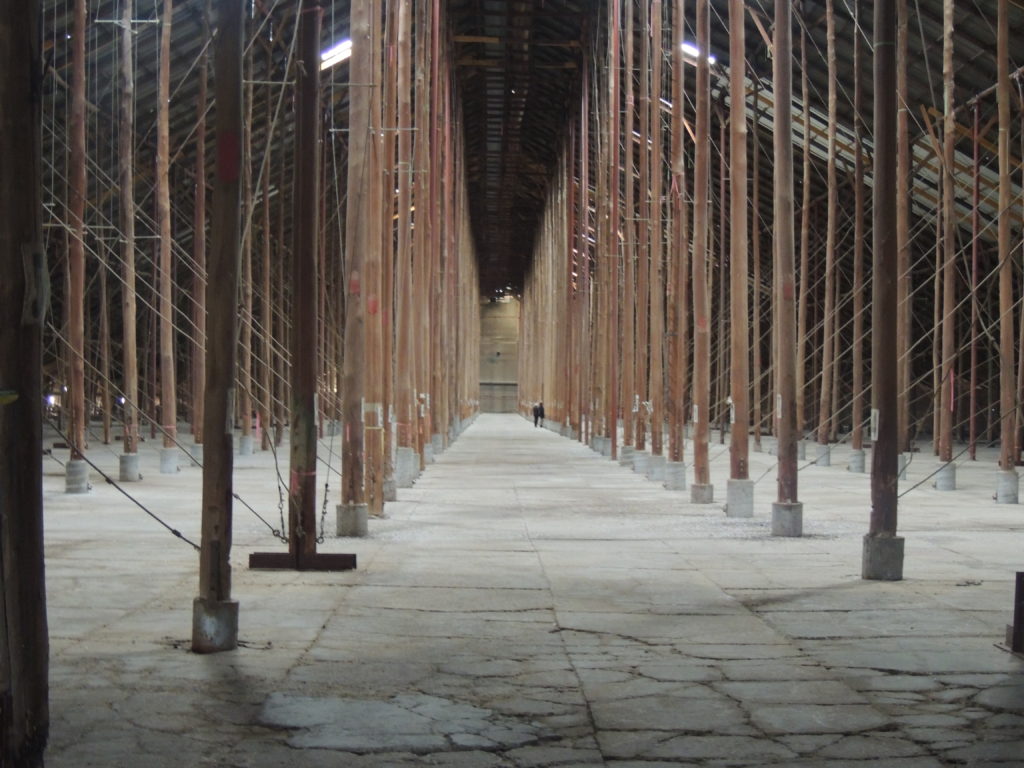
During the Second World War, there was a glut of wheat in Australia, and for obvious reasons there were difficulties in the exporting of it. As well, hessian sacks and corn bags (also used for wheat) were in short supply and the need for somewhere to store an enormous amount of grain became urgent. It was decided that a massive wheat storage facility would be built in the Victorian town of Murtoa, and work began in September 1941.
During our recent Victorian road trip, Mr MG and I passed through Murtoa and paid a visit (thanks to the Tourist Bureau in Horsham) to the wheat store which has come to be called the ‘Stick Shed’ because, well, it’s made of sticks, albeit rather large ones.
Upon entering the storage area, one’s breath is taken away by the sheer size of the building. Created from 560 unmilled tree trunks (sticks) which were brought to Murtoa from the Dandenong Ranges nearly 350 km away, the shed is 270m long, 60m wide and nearly 20m high. It was designed to hold 3.5 million bushels (92 000 tonnes) of wheat and is an outstanding example of rural agriculture: buildings that were completed using what was available at the time and almost entirely by hand, certainly without the benefit of heavy machinery. It’s a very simply designed building with the sticks embedded in concrete and capped with a corrugated iron roof. A basic conveyor belt, now defunct, ran the length of the building on one side.

We arrived on a grey, rainy winter’s day, but inside the shed, light spilt through the skylights almost as if through a stained glass window. There is certainly a cathedral-like ambience inside this place, perhaps enhanced by shadowy timbers reaching so far up to the roof.
The Stick Shed was completed in 1942 and was soon full of stored wheat which remained undisturbed until 1944. It wasn’t the only shed built, but it is the only one that endures and it remained in use until 1989 after which demolition was considered. Fortunately, people saw sense and it was added to the Historic Buildings Register in 1990.
I felt an overpowering sense of awe in this temple to Demeter. The sheer size of it, the atmosphere, the admiration for those who built it in the way they did, were almost overwhelming. It was an altogether inspiring visit, all the more so because we hadn’t expected to see it. It was just one of those serendipitous events that sometimes happen when one is travelling.




Looks amazing Jane
It certainly was, Christel. A great experience, all the more so because it was unexpected.
Great photos- you’ve captured the atmosphere very well.
Thank you, Jane. It was certainly an atmospheric building, and it was so interesting to learn its history.
Quite incredible.
It was an amazing experience visiting this shed.
Very interesting post Jane .. thank goodness one of the 22 sheds was saved. We’ll look out for this one on our travels.
Stunning building, built from Bush skills & old school practical talent, !
In the 70’s I came across a similar building in Fremantle W.A. I was mortified to hear that it was demolished, “for progress “ 😢
Still have the photos 😊
There were originally 22 of these sheds and one next to the one we visited was even larger. The Murtoa shed is the only one that survives. Thank goodness someone saw sense.
A great shed. One wonders if it could not be used as a gallery to show art or even musical events. An annual agricultural show?
Sometimes musical events have been held there, and I believe the acoustics are very good. There was also a wine and dine event earlier this year which included a five course menu created by professional chefs. All part of putting this area ‘on the map’.
What a wonderful story of ingenuity. It’s hard to imagine the quantity of wheat it would have taken to fill that vast space.
A vast amount! I don’t know how they kept the mice out for all that time.
It’s beautiful in its way, if also a little spooky.
I understand what you mean by spooky, Kris. There definitely was that kind of feeling and the dull day added to it.
It is absolutely magnificent. And the people in the photos really give a sense of size. Brilliant!
Thank you, John. It’s not so very far from you…just up the road in the whole scheme of things.
“A Temple to Demeter” is a perfect title for this post. The size is impressive, but the simplicity of the design is simply stunning. Your photos represent it will.
Thank you, Susan. I think you’re correct about the simplicity..such clean lines and nothing impedes the visitor’s view of the building.
Fascinating – thank you for sharing your visit with us! It’s wonderful how much can be made with simple materials, ingenuity and determination. Like you, I do wonder how (if?) they were able to keep rodents out.
There are so many examples of this ingenious kind of building all over Australia: shearing sheds, barns and the like, all constructed in a similar way and still standing after decades of use in demanding climates. I expect the rodents couldn’t be kept out, but there was so much grain inside that they barely made a difference.
What an interesting article and building. Even in the photos, it’s size is captivating. I’m glad they preserved it as part of your country’s history.
Thank you, Cindy. Despite being quite a simple building and without the magnificent art and decoration of a cathedral, the Stick Shed had its own special attraction.